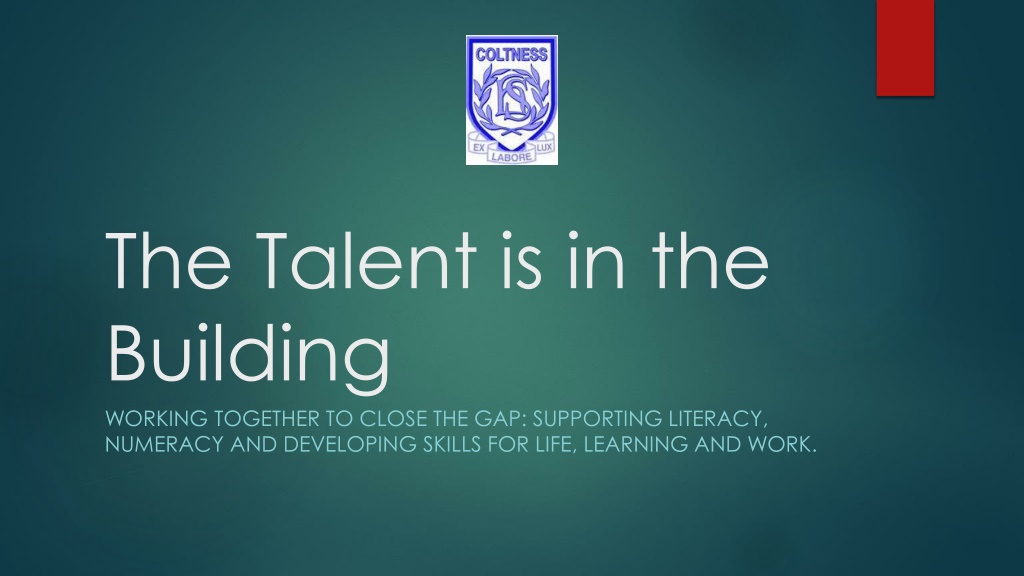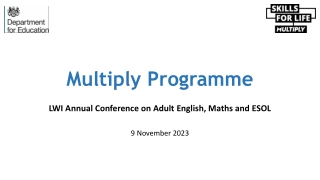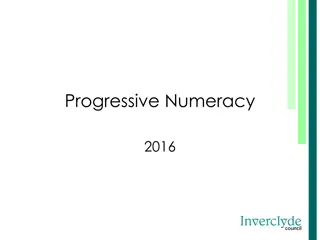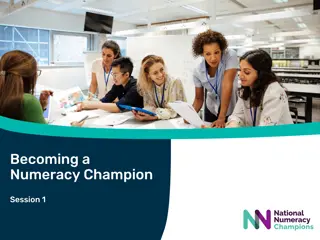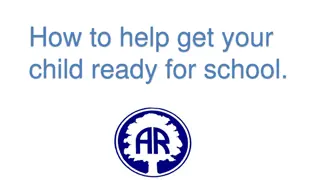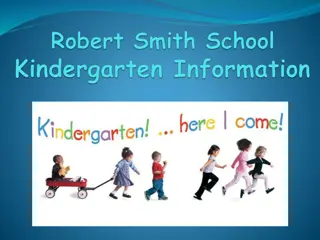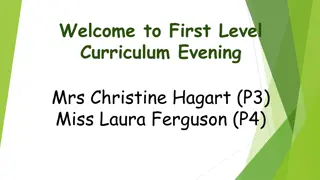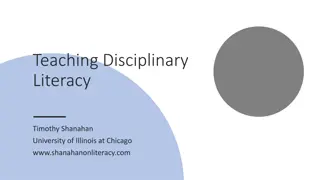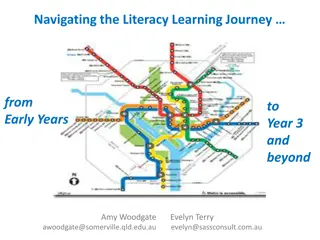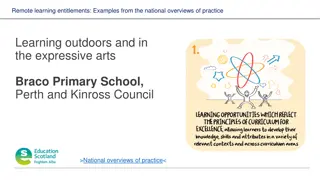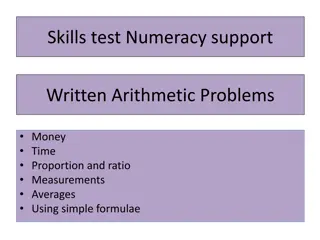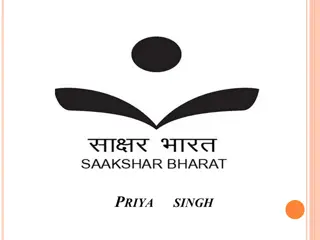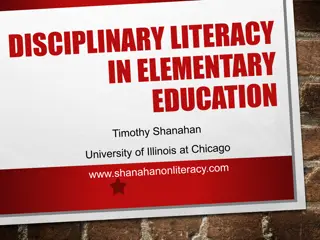Collaborative Efforts in Education: Supporting Literacy, Numeracy, and Life Skills Development
Working together to support literacy, numeracy, and life skills development is crucial in schools like Coltness High School in North Lanarkshire. Through initiatives like the Pupil Equity Fund, the school focuses on building capacity, encouraging creativity, and closing the gap in education. By nurturing partnerships and investing in ideas and skills, they aim to make real change possible, especially in addressing poverty and fostering lasting impact one student at a time.
Download Presentation

Please find below an Image/Link to download the presentation.
The content on the website is provided AS IS for your information and personal use only. It may not be sold, licensed, or shared on other websites without obtaining consent from the author. Download presentation by click this link. If you encounter any issues during the download, it is possible that the publisher has removed the file from their server.
E N D
Presentation Transcript
The Talent is in the Building WORKING TOGETHER TO CLOSE THE GAP: SUPPORTING LITERACY, NUMERACY AND DEVELOPING SKILLS FOR LIFE, LEARNING AND WORK.
Coltness High Schools context: In North Lanarkshire In the Coltness an area of Wishaw August 2018, estimated school roll 929 Approximately 40% of our pupils are placing requests New build/refurbishment in 2012 2017/18 PEF 98,000 2018/19 PEF 109,000
SIMD Cumulative % of roll 30 50 80 85 90 95 100 100 1 & 2 3 4 & 5 6 7 8 9 10
Give time, spend time and through time When good people come together, great things can and do happen, for real lasting change happens one on one, one by one and then in partnerships. We never can tell how the little that we communicate quite simply to another person, another person s child, may find a resonance in their soul which may last their whole life long. Norman Drummond Columba 1400
Building Capacity: Encouraging Creativity Closing the Gap: Our Nurturing School Young people focus groups CPD- Aspiring DHTS/ PTS/ Leaders of Change Trio working/ small tests of change leading school improvement P7- S6 Tracking and Monitoring. Parental engagement sessions. Scottish Attainment Challenge Mentoring Programme. Trainee social worker Partnerships- Prince s Trust,[Commercial resource provider], Ed Psychologist, CAMHS Before PEF Funding
Our Vision: Pupil Equity Fund in The Nurturing School Pupil Equity Fund has given us the opportunity to truly invest in our ideas, skills, creativity, partnerships and our moral purpose! Pupil Equity Fund has enhanced our small tests of change. Pupil Equity Fund has put poverty on the table. Pupil Equity Fund has challenged us to make a change.
Pupil Equity Funding: making real change possible Sharing best practice Building Capacity Career Pathways Focus on Primary Transition Creating a Skills Framework for the school community. S1 Mentoring Closing the Gap Team DHT Developing our skills to close the gap PT 6 Mentors (0.4 PT) Using data and professional chats to plan targeted support. School Counsellor Universal Support Peer coaching to support staff. Small tests of change: making the legacy
CPD- Investing in talent Continuous professional development investment in: nurture technologies resilience tracking and monitoring digital literacy literacy / numeracy across learning pupil leadership parent partnership group Enhanced and targeted support
Ambitious Professional Dialogue Encourage risk taking and exploring new ideas. Focus on skills. Plan, do, study, act- tell us about it! Give time for professional reading, dialogue and debate. Challenge each other s thinking. Ask the young people. Ask their parents/ carers. Ask all possible partnerships- what do you think? Dream big take your time. Encourage the magic weavers Sir John Jones. Be a team!
Closing the Gap: Small Tests of Change Sharing best practice and data to make professional judgements regarding how to close the gap in our local setting in Wishaw. Addressing literacy gaps in learning- implementing [Commercial Literacy programme] Addressing numeracy gaps in learning- implementing modified SEAL/ Maths Recovery Programme. Building confidence and developing skills- S1 Mentoring Whole School Skills Framework- skills based learning and teaching in specific settings- genuine collaboration (Hargreaves 2007) generating our skills ladder- you choose your rung!
Coltness High School have increasingly identified growing numbers of pupils with low reading ages. Staff have never felt equipped to tackle this. Pupils are supported in terms of appropriate strategies added to their pen portrait but the actual mechanics of effective phonics teaching have never been in teachers skills set. In 2017 NLC introduced [Commercial Literacy approach] . to secondary staff. This was perfect timing as all CEM data had been analysed and as a school we were looking for an intervention strategy to improve reading ages. Four staff have been trained in this approach.
Literacy programme promoted by NLC designed to support young people who have significant gaps in their learning. NLC Literacy Team provided CPD and extensive support is ongoing. Aimed at young people who have a reading age of below 9.5 years. Data is used to enhance professional judgement regarding who needs support. Bespoke timetabling is essential to ensure the best possible outcomes for all. Next steps- collaboration with partner primary schools.
Identification Following [Commercial Literacy programme] guidelines, CEM data was analysed and pupils with a reading age of 9.5 and below were given the YARC assessment, this process was done with support from the NLC literacy base. Pupils who met the criteria for [Commercial Literacy programme] were then put into two different groups according to their reading levels. We not only looked at S1 Pupils but also S2, as through Support for Learning there were pupils who we knew had low reading ages. Groups There are currently two groups who meet 5 periods a week, the continuity and pace of the programme is essential to increasing the speed of children s reading development. The small group setting also provides an excellent nurturing environment, the groups meet Period 1 every day, so it is a positive start to their days.
Pupil 1 S1 Pupil 2 S2 From October 2017 to January 2018 From October to January 2018 Increase in reading age 1 year Increase in reading age 1 year 3 months Increase in reading Rate 1 year Increase Reading Rate 1year Increase in Comprehension 1 year Increase in Comprehension 1year 9 months
[Commercial Literacy programme] : SCHOOL VOICE Pupil A is now asking to read out his answers in Science! Teacher. [Commercial Literacy programme] was quite tricky at the start but as I progressed through the work I became much more confident. S2 Pupil My son practises his handwriting and his reading in the house. Parent. I would never read out in class but now I get in first! S1 Pupil We now have a reading breakfast every Friday morning ! [Commercial Literacy programme] Teacher I am more confident and really enjoy listening to audio books. S1 Pupil
Rationale Rationale As part of our Enhanced Transition programme, we have decided to extract selected S1 pupils to work on their basic mathematical skills. The pupils will be extracted from Maths in order to avoid impacting on other curricular areas. Pupils will miss one period of Maths a week, but the improvement we will see in their basics will be worth it in the long term. Without these basics, pupils will struggle to cope in their regular Maths class.
Coltness Maths Recovery Witnessed as good practice (Probationer teacher). Pupils identified using data and teacher judgement (S1). Groups covering Addition/Subtraction, Multiplication and Division. Planned using SEAL & CGI strategies- professional reading. Tracked using short assessments, written and also observed. Parental support. Pupils enjoy it and comment on increased confidence! Timetabled support.
Changing the conversation to skills and creativity!
S1 Skills Focus Staff Development Day
Skills Framework CHOOSE YOUR RUNG Curricular Areas/ Curricular Design Positive Destinations BGE Moderation Higher Order Thinking Primary Transition Decision Making Literacy- Languages growth mind-sets! Creativity Numeracy- Maths Marathon Evaluating Political Literacy- Speak out Problem solving Digital Literacy- Macs in Music Stating and supporting a point of view H&WB- Skills Passport Developing young workforce- Early Ed & Childcare Skills Development Scotland Technologies- Project Build Express yourself with confidence. Fashion Brand and Retailing/ Bespoke tailoring and design/ photography.
Wednesday Welcome: local church working with our young people boosting their skills and confidence
Achieve Group : Learning Sign Language/ making a healthy meal: Building resilience.
Skills development in staff! Working with our Primary colleagues has improved how we share information and expertise. Teacher Staff development and encouragement has increased my confidence, improved my skills and made me realise I have created a skills approach to learning and teaching. Teacher Partnerships are providing valuable opportunities for our young people and staff. Teacher
Closing the Gap in Coltness High School: Leadership of Change Project Build The Nurturing School [Commercial numeracy programme] [Commercial Literacy programme] SEAL MATHS WEDNESDAY CLUB Enhanced MENTORS BAKING CLUB PT PEF PE- SO MANY TO MENTION SCHOOL COUNSELLOR ASDAN SOCIAL WORK STUDENT SOCIAL SKILLS GROUP NLC ATTAINMENT MENTORS ACHIEVE TRIO in NLC sharing best practice. EARLY EDUCATION AND CHILDCARE
